His Holiness Jagadguru Shri Jayendra Sarasvati Swamiji of Shri Kanchi Kamakoti Peetam with the Jagadguru of Shri Govardhan Peetam, Puri, at the Conference of all Religions held in Puri Kshetra from 1st to 5th December, 1974.
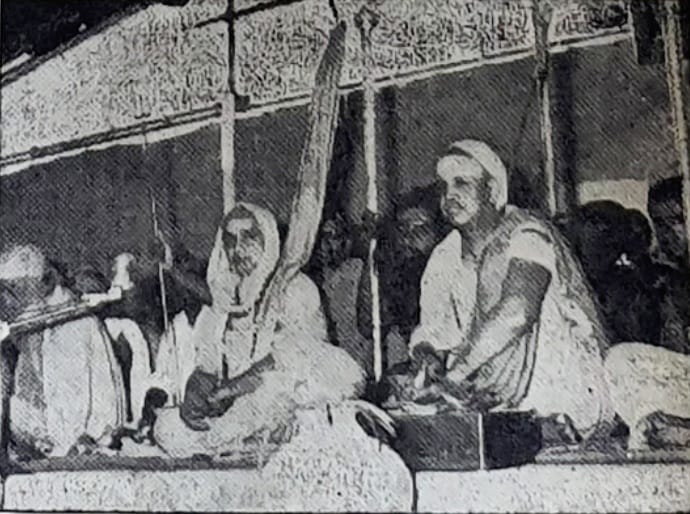
His Holiness Jagadguru Shri Jayendra Sarasvati Swamiji of Shri Kanchi Kamakoti Peetam with the Jagadguru of Shri Govardhan Peetam, Puri, at the Conference of all Religions held in Puri Kshetra from 1st to 5th December, 1974.

The Age of Sankara – Released on the occasion of the National Seminar on “Age of Sankara” held on 20th January, 2003 in Mumbai – Published by Veda Sastra Pandita Raksha Sabha, Sion(East), Mumbai.
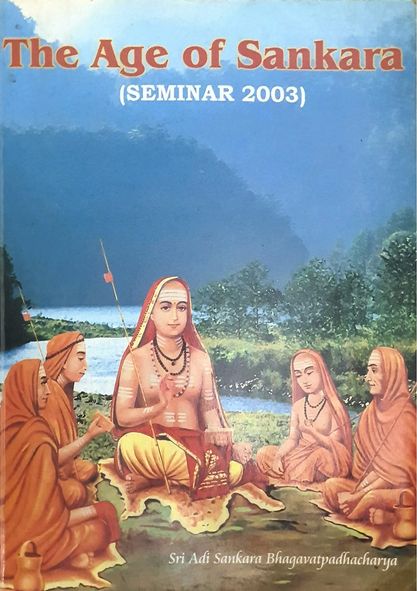
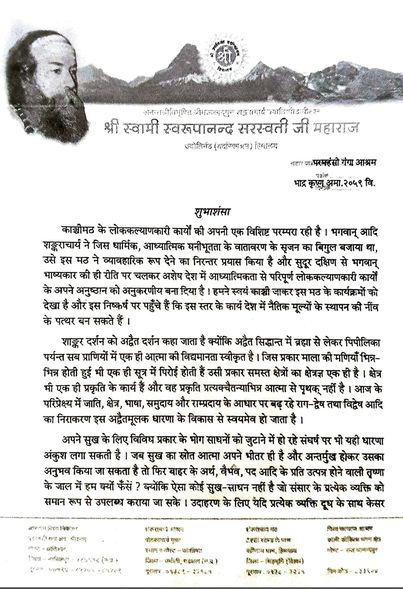
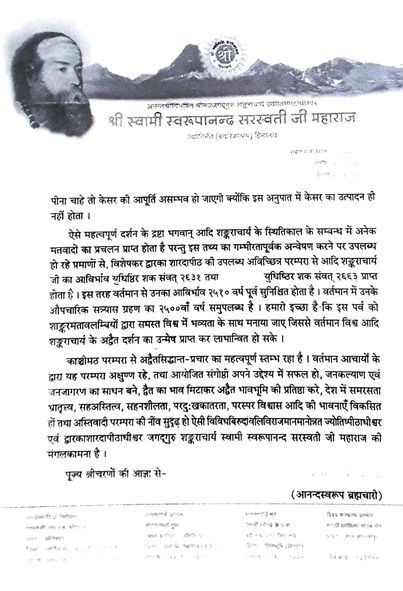
Excerpts:
QUESTION: What brought you to Sringeri now?
ANSWER: The Sringeri swami invited me to this meeting, and told me that we would be discussing the Ram Janmabhoomi issue. So I came. Perhaps, you should ask him what this is all about. They told me that it would be an opportunity for all the four Shankaracharyas to meet, and I was happy about that,
Q: So you do recognise the Kanchi Shankaracharya as one of you, and there are no longer any problems on that count?
A: You should ask this to the two mutts who actually had those differences (Kanchi and Sringeri). If they say they have all come together now, I am happy about that. It is better that we are not divided over small issues.
(THE WEEK, July 11, 1993)
Sri Govardhanamatha Jagadguru Parampara Namamala
(SRI SAMKARACHARYA – K.G.Natesa Sastri, B.A., M.A.R.S.)
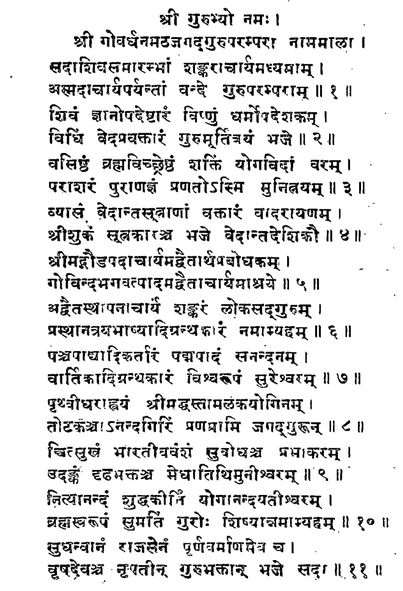
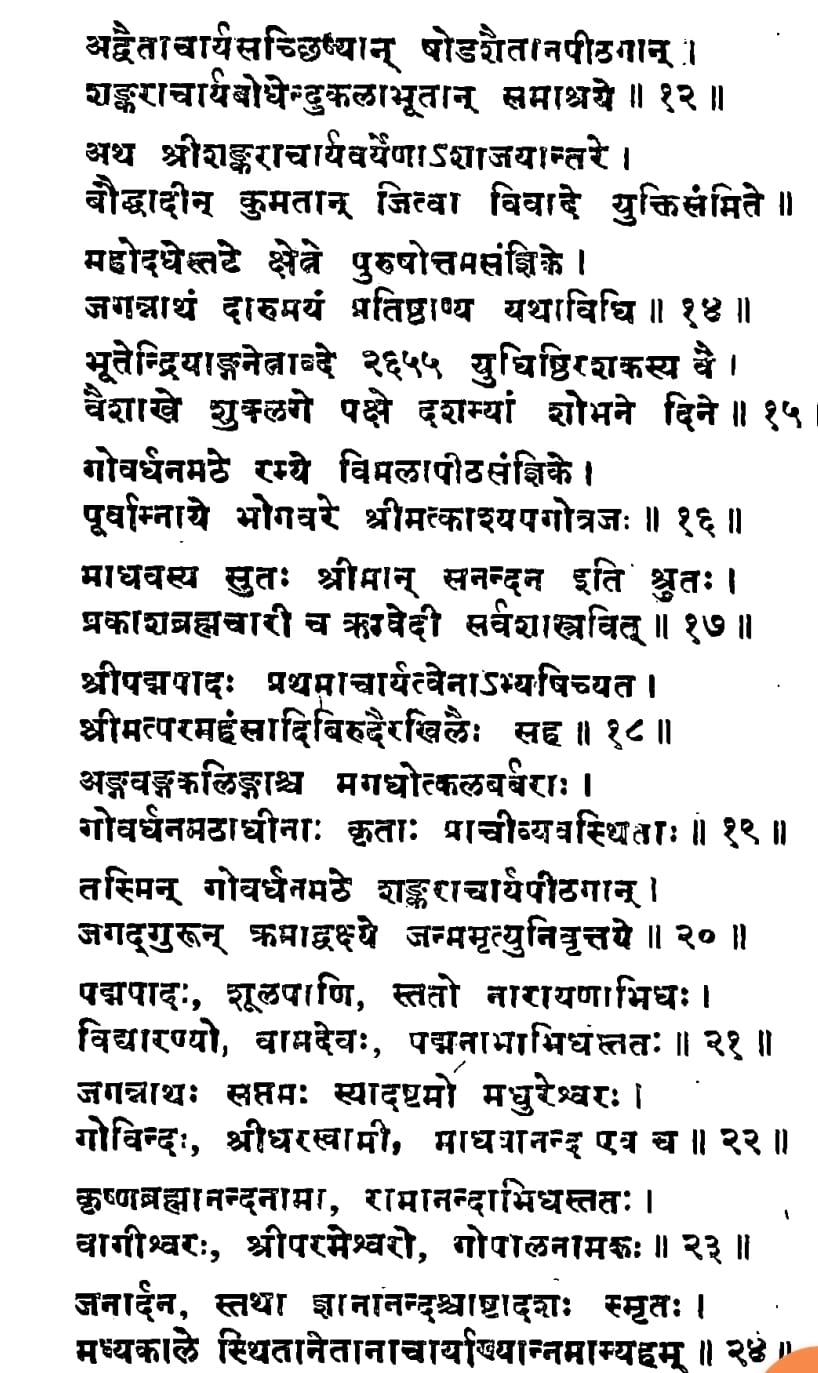
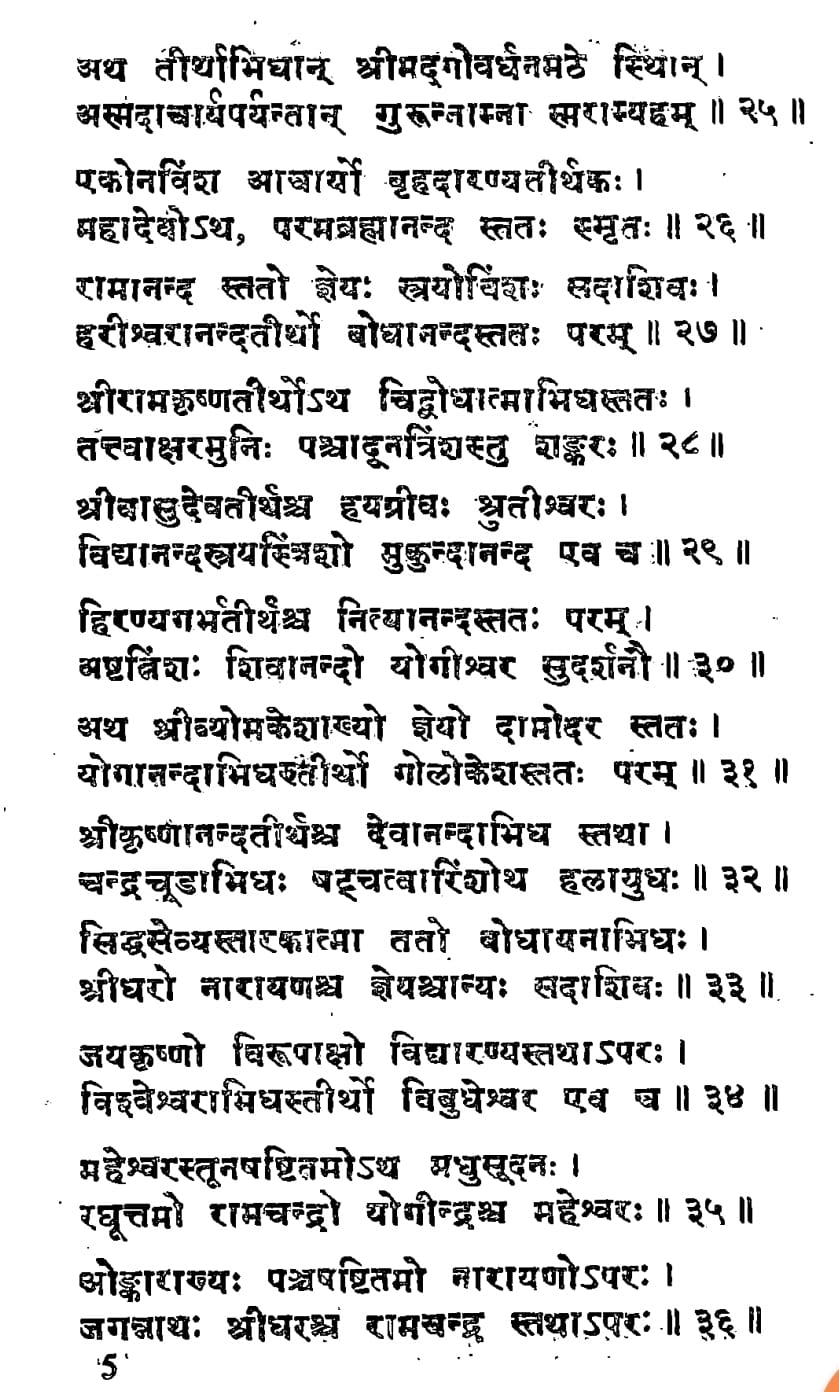
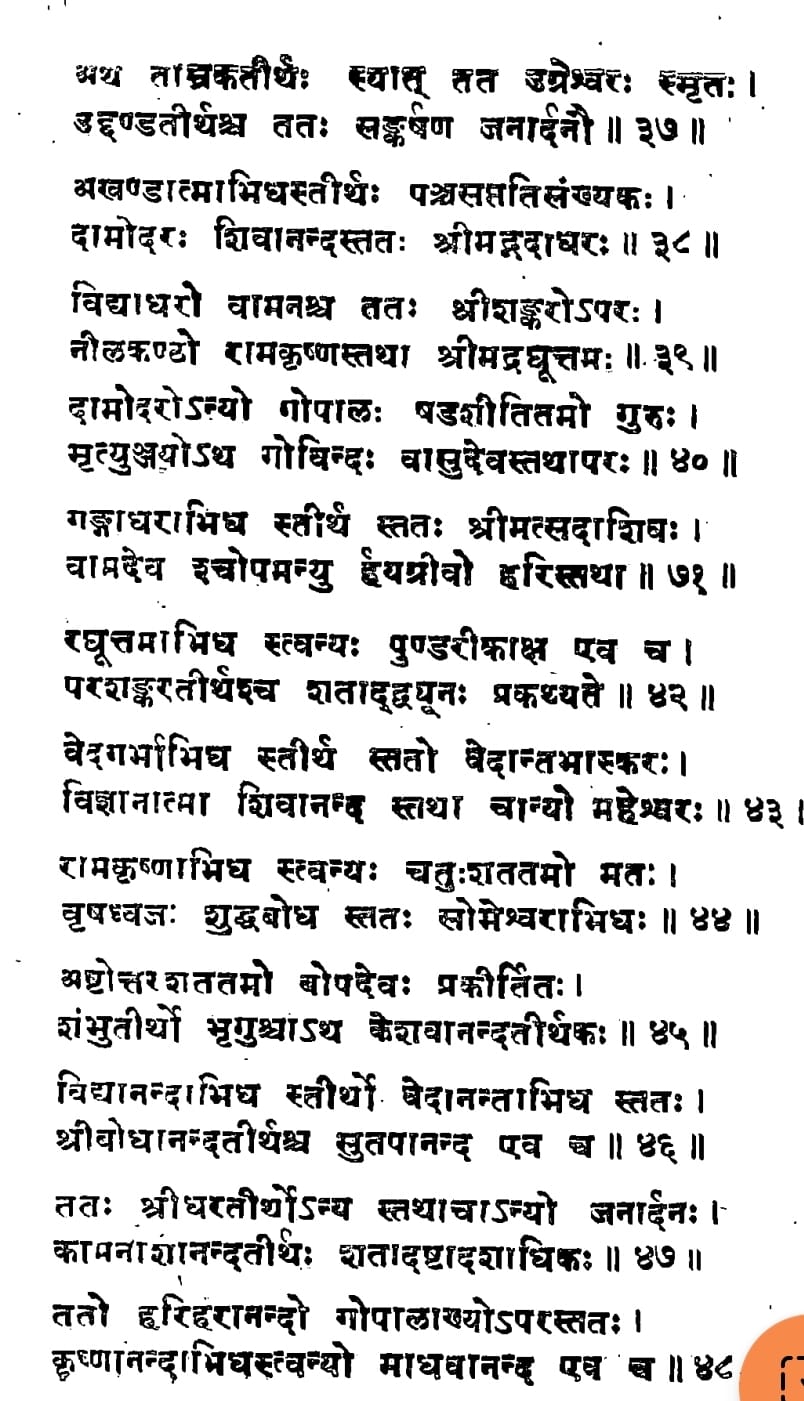
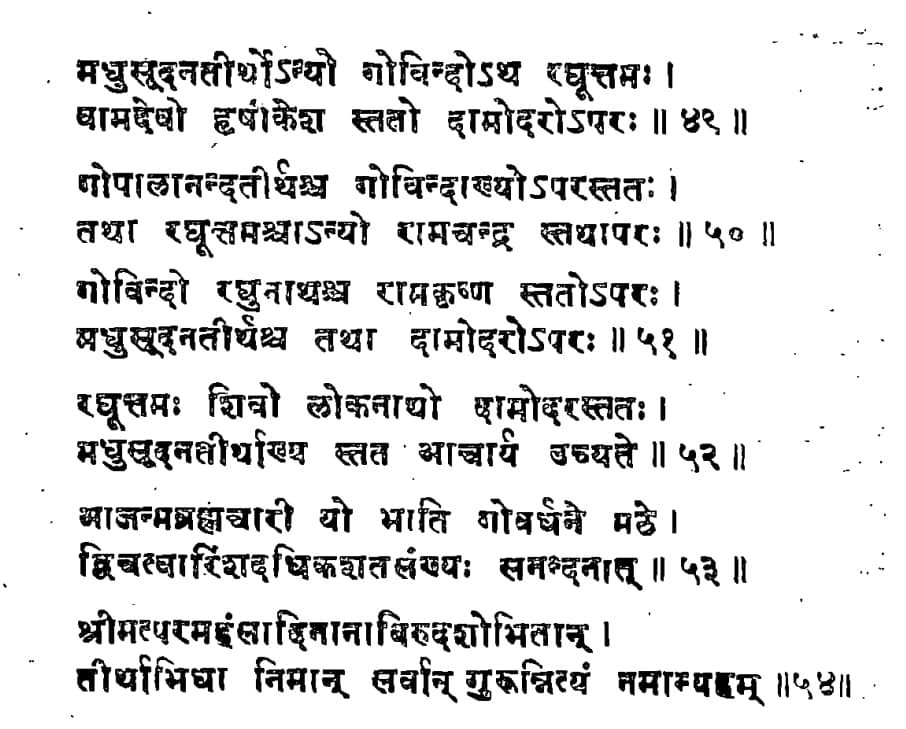
Shri.N.Krishnaswami Reddi,
Former Justice, Madras High Court
Sri Sankara Bhagavatpadacharya stands unique among the great philosophers and spiritual revivalists of the world. He has shone as a great preceptor, as a conspicuous writer, as a commendable commentator, as a versatile poet and as a dis cerning dialectician. The fact that many a leading philosopher and scholar who thrived during Sankara’s own life-time and during the long centuries thereafter, have produced further commentaries on his inimitable gloss on Vyasa’s Brahmasutras, stands testimony to Sankara’s lucid exposition of terse metaphysics.
Sankara’s name and fame have left an everlasting impression in the minds of the vast majority of Indi ans. A significant number of erudite foreign scholars and thinkers have paid culo gistic tributes to Sankaracarya. For the devout Hindu, Sri Sankara is a Super-human luminary, verily an incarnation of the Divine.
All biographies of the Acharya are uniform in stating that, even when a boy, he was a prodigious intellectual. Becoming an ascetic at the age of eight, having under gone the formalities of the ascetic order under Sri Govinda Bhagavatpada, Sankara is said to have completed the production of the famous commentaries on the Brahmasutras, on the Bhagavat Gita, the principal Upanishads etc., during his stay at Varanasi, according to the directions of his preceptor, by his sixteenth year.
By continued, long and wide travel, on foot, almost through every nook and corner of Bharat, by his disso lution of non-Vedic heretic sects by disputation, by the propagation of the Advaita dis cipliine and by his stabilising the six-fold devotional path (Saiva, Vaishanava, Sakta, Ganapatya, Saura and Kaumara) on the Vedic base, Sankara has been a great na tional integrator.
It is a pity that information regarding the various important sacred places, vis ited by Sankara during his long and extensive tours, as recorded in the many biographies, is not uniform But the Great Acarya’s visits to Prayag, Varanasi, Badrinath (the Northern dham), Rameswaram (the Southern cardinal corner) and to Kanchi, the Southern Mokshapuri, are pointed out in all biographies, though differing in order, context and timing.
In some of these accounts, a chapter or two or even more are devoted to de scribe Sankara’s arrival at Kanchi and his performances there. Some biographies give short accounts about some specific event that has happened during his stay in the sacred city. A significant number of works in Sanskrit or in other languages, bio graphical or otherwise, point to Kanchi, the Southern Mokshapuri, as the last resort of Adi Sankaracharya.
From authentic literary sources ancient or modern-, from information gained from epigraphical and archaeological sources, and according to long-standing tradition, Sankaracharya has established monastic institutions (maths) at many important and sacred places visited by him, during the course of his extensive travels through the length and breadth of the country. Among such institutions the Sankaracarya Math, established by Sankara at Kanchi and presided over by the Acharya himself, is a pre mier one. Scholarly and austere ascetic pontiffs have adorned the Kanchi Math.
The copper-plate grants and stone inscriptions pertaining to the Kanchi Kamakoti Sankaracarya Matha were published during 1909 and 1987 .
A perusal of the text and abstract of the contents of three of the seven copper epigraphs of the Mutt (Nos. 1, 6 and 7) would make it evident that the personal name of the donce Svami is not indicated in each case. Only “Sankararya Guru” of the “Matha at Kanci” is found in copper-plate No.1. In the 6th, neither the personal name of the donor nor of the donee can be traced.
Epigraphists, after a thorough examination, have, however, been able to fix the donor as Tana Shah, the last Sultan of the Qutub Shahi dynasty of Rulers of Golconda. This epigraph (in the nature of an order), speaks of an annual contribution in cash out of the revenue of a village in the Chengleput District (Tamil Nadu), for the “Maintenance of lamps and offering of oblations to God Chandramauleesvara worshipped by Paramahamsa Parivrajakacarya Sri Sankaracharya Swami, in the Sarada Matha, in the divine city of Kanchi”.
The last in the series of copper-plate inscriptions is dated in 1710 A.D. It records the grant of tax free lands in eight villages in the Tiruchirapalli district (Tamil Nadu) for purposes of worship, feeding of brahmins etc., in the Matha at “Gajaranyakshetra” (Tiruvanaikoil near Tirchirapalli), by a Nayak ruler of Madurai.
The Matha at Gajaranyakshetra is a branch Math of the Sankaracharya Math at Kanchi. In this epigraph the donec Swami is indicated as “Kancipurasthita Srimacchankara Bhagavatpadacarya Swami” and as “Lokaguru Swami Sri Sankaracarya”.
Moreover, this epigraph points to the fact that the branch Math at Tiruvanaikoil has been owned by the Acharyas of the Kanchi Matha from “ancient times”.
The absence of the mention of the personal names of the pontiffs of the Kanci Sankaracarya Matha, of the times, in the three grants, mentioned above, serves to clearly indicate the wide popularity and pre-eminence of the Kanchi Sankara Matha, in the entire southern part of the country.
The six stone inscriptions pertaining to the Sankaracharya Matha of Kanchi, ranging in time from the early part of the 16th century (A.D.), till the seventh decade of the last century. These stone epigraphs are much informative.
I feel extremely happy in having done a humble bit of service by writing an introduction to the volume of inscriptions relating to Sri Sankara Bhagavatpadacharya’s ancient Matha in the sacred city of Kanchi.